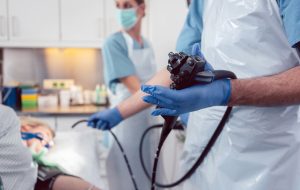
Symptoms of stomach cancer
Stomach cancer (or gastric cancer) is now a well-known disease. In this case, the cancer cells grow in the stomach or its lining cells (the lining). Globally, relatively more people are affected by this cancer. There may be no symptoms initially, making early detection or diagnosis challenging. Cancer cells spread very quickly and later take on a malignant form. Today we will know the detailed information about stomach cancer.
Types of Stomach Cancer
Cancer can occur in any part of the stomach. The junction where the tube that carries digested food joins the stomach is called the gastroesophageal junction. Cancer can occur at the gastroesophageal junction. Most cancers occur in the main part of the stomach, called the body of the stomach. Stomach cancer is most common in East Asia and Eastern Europe. Men are two times as liable to foster the sickness as ladies. This cancer can be Adenocarcinoma, Gastrointestinal stromal tumors (GIST), Carcinoid tumors, Lymphoma etc.
Blood cancer (leukemia). Know the signs, be careful!
What signs to watch out for?
Stomach carcinoma does not show any symptoms in the early stages. However, initially there may be indigestion and upper abdominal pain. As the cancer progresses, the following symptoms appear-
- Abdominal pain or discomfort
- Continuous acidity problem or indigestion
- Nausea and vomiting
- Loss of appetite and rapid weight loss
- Difficulty swallowing food and bloating quickly after eating
- Feeling tired or weak all the time
- Blood in the stool or dark stools
- Vomiting blood
Why is stomach cancer?
The specific reason for this disease is obscure, yet a few gamble factors have been recognized. These include-
Helicobacter pylori infection

Ongoing disease with Helicobacter pylori microorganisms is viewed as the primary driver of this malignant growth. Inflammation occurs due to these bacteria. Certain types of this bacteria are associated with a higher risk of stomach cancer.
7 ways to reduce the risk of deadly cancer
Unhealthy eating habits

Eating more pungent food varieties, as well as eating less products of the soil, expands the gamble of stomach malignant growth. Long-term tobacco, smoking, alcohol also have a chance of developing this cancer.
Family history

Individuals with a family background of stomach malignant growth are at a higher gamble of fostering the sickness.
Age and gender

Gastric cancer is more common in older adults, usually over the age of 55. Men are also more likely to develop this cancer than women. This is because estrogen may protect women against the growth of these types of cancer cells.
Diagnosis

If stomach cancer is suspected, consult a specialist without delay. Then various tests can be done to identify the type and stage of the cancer.
Endoscopy

This test involves inserting a thin, flexible tube with a camera through the mouth and looking for abnormalities in the lining of the stomach.
Biopsy

If necessary, a small sample of tissue is taken from a specific area of the stomach through an endoscopy and sent to a laboratory for examination under a microscope to determine if cancer cells are present.
Imaging tests

Tests such as MRI, abdominal (PET) CT scan may be done to determine the extent of cancer spread and detect possible metastasis to other organs.
Treatment

Therapy relies upon the phase of the disease, where the malignant growth cells are, and the generally state of being of the patient.
Surgery

The most widely recognized treatment for this illness is careful evacuation of the cancer. A fractional gastrectomy (evacuation of part of the stomach) or an all-out gastrectomy (expulsion of the whole stomach) might be performed relying upon the stage and area of the disease. Alternatively, a portion of the intestine is taken and attached to the esophagus.
Chemotherapy

Chemotherapy uses powerful drugs to kill cancer cells and suppress their growth. It can be given as neoadjuvant or postoperative adjuvant therapy before surgery or as primary treatment in advanced or metastatic cases.
Radiation therapy

This treatment uses high beam rays to target cancer cells. It tends to be utilized when medical procedure or in mix with chemotherapy.
Target therapy

In some cases, specific drugs that specifically suppress cancer cells may be used. These drugs interact with specific molecules in cancer cells to destroy them, while also ensuring that the cancer does not spread.
What foods to keep in the diet to boost the body’s metabolism?
Do whatever you can to reduce the risk
- Keep various colorful fruits, fresh vegetables, low oil spicy foods in the diet chart
- Reduce intake of salty and semi-cooked food
- Stay away from cigarettes, alcohol
- If someone else in the family has a history of stomach cancer, get cancer screening every year
- Consult a doctor immediately if the initial symptoms appear
Conclusion
The achievement pace of this sort of malignant growth treatment is high assuming the illness is analyzed at a beginning phase. Although this disease cannot be completely prevented, we can be aware of its risk factors if we know it.
Read More Articles
Instagram Twitter Facebook LinkedIn Quora Google News
Our Other Engagements:


https://livewithgreen.com/stomach-cancer-symptoms/
.jpg)